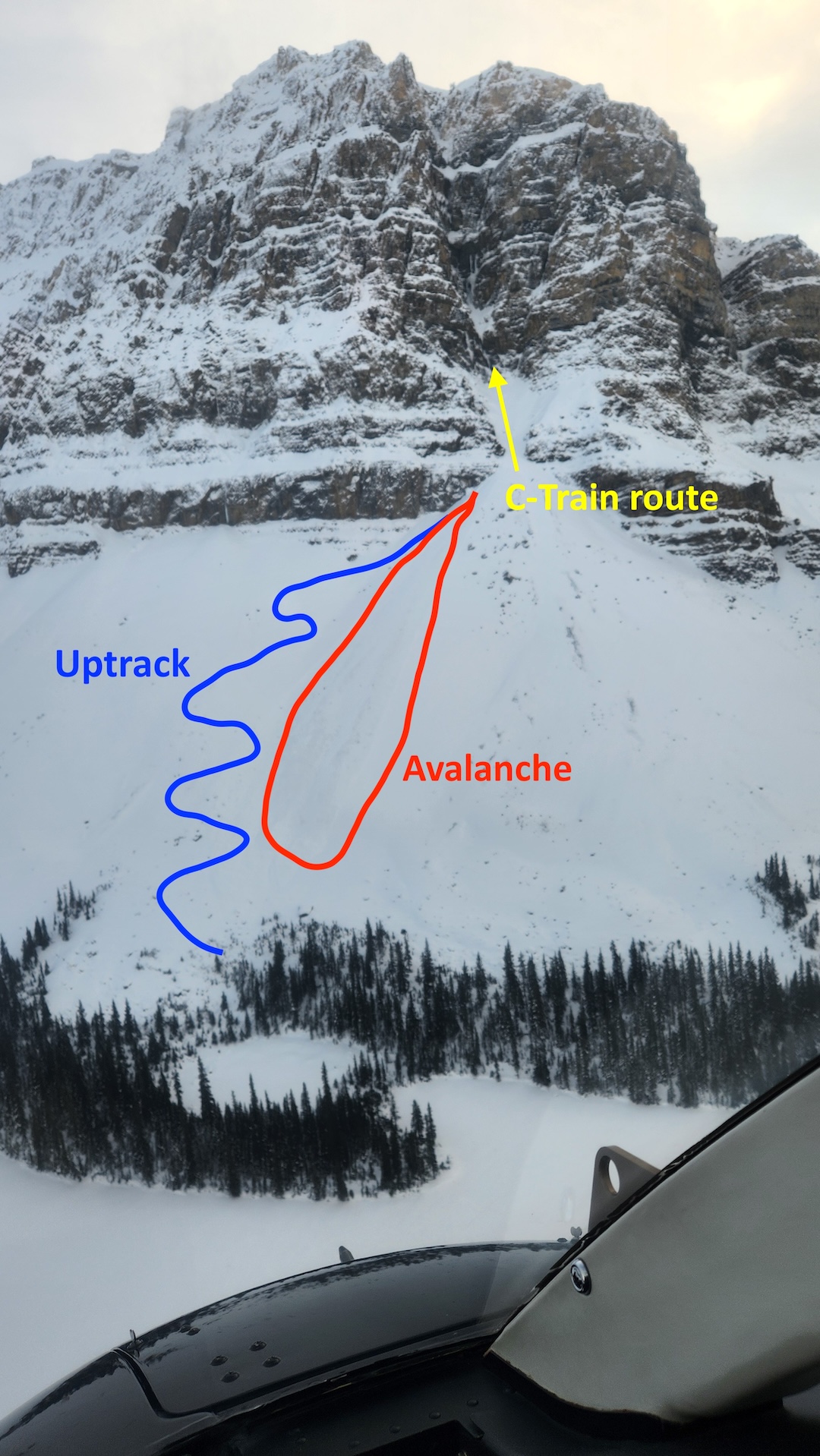Avalanche on Approach — Deep Persistent Wind Slab
Canada, Alberta, Banff National Park, Crowfoot Peak

On December 15, two climbers set off across Bow Lake to climb C-Train (200 meters, M6), an alpine mixed route on the north face of North Crowfoot Peak. The approach requires ascending a 400-meter snow fan to reach the base of the cliff.
When the two climbers were 300 meters up the fan, they crossed a steep moraine. This released an avalanche above them. One climber jumped off the slab, while the other was carried about 275 meters down the slope. The latter was partially buried and received a large laceration on the head.
The party member who was not caught immediately pressed SOS on an inReach device, then descended the debris to look for their partner. The climber was located on the surface, and after determining the injuries were minor, the pair decided to self-evacuate. They canceled their SOS and returned to their vehicle; the head laceration was treated at a hospital.
ANALYSIS
The avalanche forecast for the region that day was rated moderate, listing deep persistent slab and wind slab problems. It stated, “Areas with a stiffer slab over the mid-pack facets have the potential to step down to these deeper layers.... the layers have been most reactive in steep, thin, wind-affected spots.”
The climbers noticed several “whumphs” and cracking in the snowpack on their way up, which is an indicator of unstable snow. In hindsight, they said, “We should have paid more attention to those, and that we were in the exact kind of terrain the avalanche forecast warned about.”
These winter climbers were well prepared for avalanche terrain, wearing transceivers and carrying a shovel and probe each. The upper person was wise to push the SOS button on the inReach immediately, mobilizing rescue resources. They were also smart to cancel their SOS once they realized they could self-evacuate. This is a good example of proper usage of a satellite emergency device. (Source: Parks Canada.)

